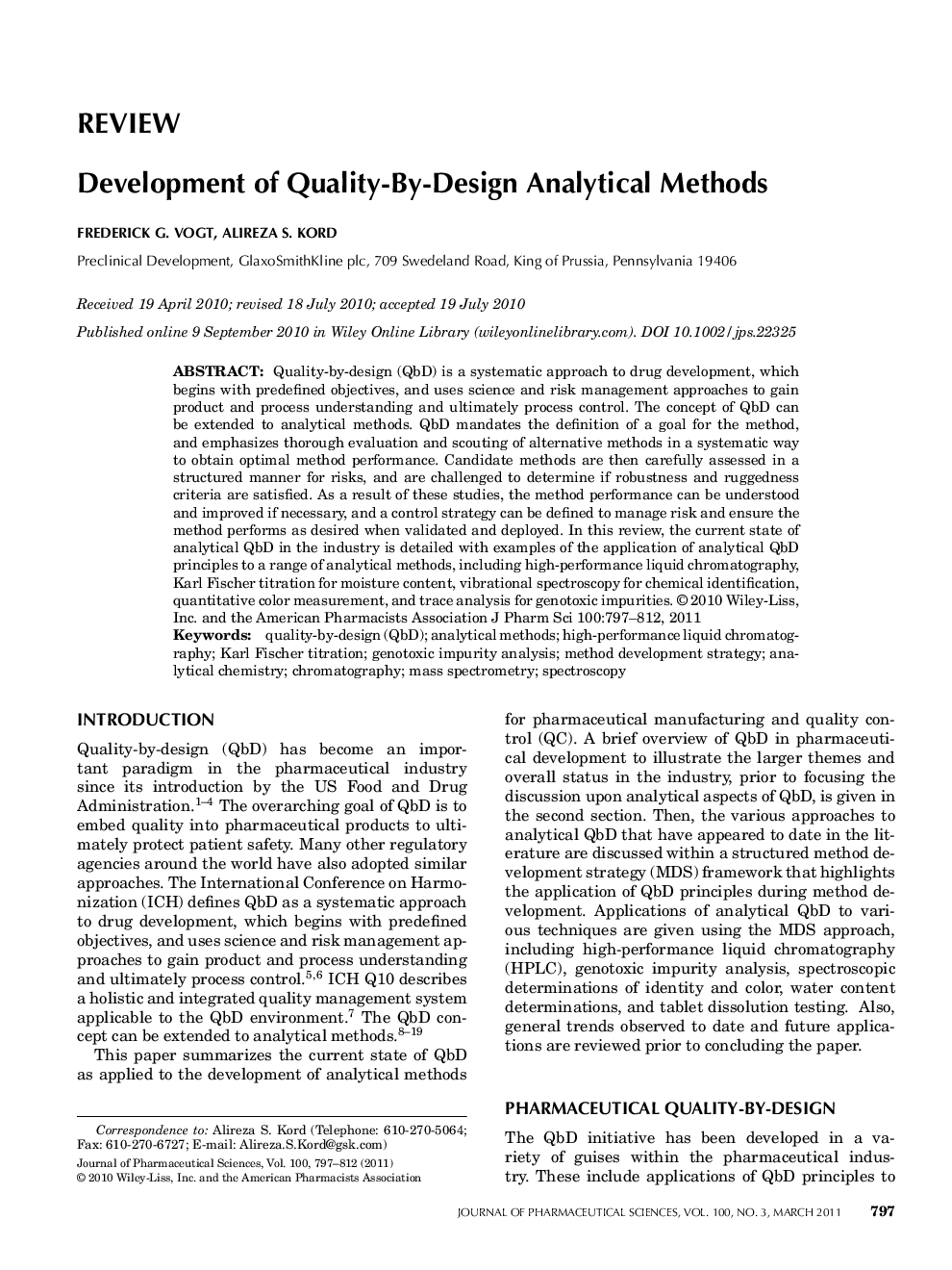| Article ID | Journal | Published Year | Pages | File Type |
|---|---|---|---|---|
| 2485796 | Journal of Pharmaceutical Sciences | 2011 | 16 Pages |
Abstract
Quality-by-design (QbD) is a systematic approach to drug development, which begins with predefined objectives, and uses science and risk management approaches to gain product and process understanding and ultimately process control. The concept of QbD can be extended to analytical methods. QbD mandates the definition of a goal for the method, and emphasizes thorough evaluation and scouting of alternative methods in a systematic way to obtain optimal method performance. Candidate methods are then carefully assessed in a structured manner for risks, and are challenged to determine if robustness and ruggedness criteria are satisfied. As a result of these studies, the method performance can be understood and improved if necessary, and a control strategy can be defined to manage risk and ensure the method performs as desired when validated and deployed. In this review, the current state of analytical QbD in the industry is detailed with examples of the application of analytical QbD principles to a range of analytical methods, including high-performance liquid chromatography, Karl Fischer titration for moisture content, vibrational spectroscopy for chemical identification, quantitative color measurement, and trace analysis for genotoxic impurities.
Keywords
Related Topics
Health Sciences
Pharmacology, Toxicology and Pharmaceutical Science
Drug Discovery
Authors
Frederick G. Vogt, Alireza S. Kord,
